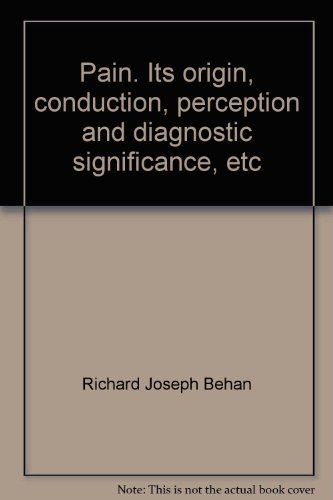
Pain, Its Origin, Conduction, Perception and Diagnostic Significance
by Richard J. Behan
Publisher: D. Appleton 1920
ISBN/ASIN: B000WG48L4
Number of pages: 970
Description:
Pain is universal, and is present in practically every disease, and in most diseases it is the one symptom which first attracts the patient's attention and causes him to become aware of some change in his physical well-being. The physician needs to know not only the various factors to which a certain pain may be due, but also the reasons why it should be produced and the different diseases giving rise to pain of similar character and location.
Download or read it online for free here:
Download link
(multiple formats)
Similar books
 Applied Physiology
Applied Physiologyby Robert Hutchison - Arnold
In the present book an attempt has been made to apply physiology to medicine in the same way as anatomy has long been applied to surgery. It is not intended to be a substitute for physiological textbooks, but merely a companion to them.
(13002 views)
 Energy Metabolism
Energy Metabolismby Patrick Christian Even (ed.) - Frontiers Media SA
Energy metabolism is central to life and altered energy expenditure is responsible for development of the obese phenotype. Energy expenditure is the sum of resting EE, EE of physical activity, cold-induced thermogenesis and thermic effect of feeding.
(6806 views)
 Regulation of Tissue Oxygenation
Regulation of Tissue Oxygenationby Roland N. Pittman - Morgan & Claypool Life Sciences
This presentation describes various aspects of the regulation of tissue oxygenation, including the roles of the circulatory system, respiratory system, and blood, the carrier of oxygen within these components of the cardiorespiratory system.
(10445 views)
 Basic Anatomy and Physiology of Human Body
Basic Anatomy and Physiology of Human Bodyby A. O. Osunderu - National Open University of Nigeria
Anatomy and physiology are closely integrated both theoretically and practically. Anatomical information provides clues about probable functions and physiological mechanisms can be explained only in terms of the underlying anatomy.
(18004 views)